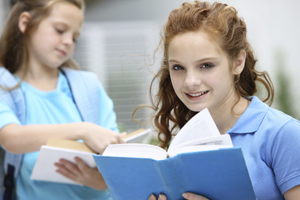Teaching mindfulness and compassion in schools

Mindfulness should not be the next school curriculum used one year and not the next. It is not another subject to be forced on students and teachers, or to be tested against standards.
by Daniel Rechtschaffen —
Schools across the globe are turning to mindfulness in the hope that it will be an antidote for the rising stress, emotional dysfunction and attention deficit in their students. Ongoing research reveals that a consistent mindfulness practice can help us to be happier, more focused, compassionate, emotionally regulated and less impacted by stress. What school would pass up a new curriculum touting higher test scores, fewer playground fights and a calmer, happier student population?
In South Burlington, Vermont, students begin and end each day with a few mindful minutes focusing on their breath and building their attention muscles. In Baltimore, Maryland, high school students walk into the chill room when they need to cool down from stressful situations, work toward impulse control and learn to communicate during conflict. In Sun Valley, Idaho, students practice compassion in school and then make it real by choosing community service projects in their town, or even traveling around the world sharing their empathetic commitment.
This sounds like a magic pill. The only problem is that mindfulness cannot be swallowed with a glass of water; its many benefits develop through consistent practice and introspective explorations into the mind, heart and body.
In order to relax, we need to become aware of our stress and tension. In order to find peace of mind, we need to face the chaotic swirl in our brains. In order to feel happier and more content, we often need to first feel the anxiousness and sadness in our hearts. We cannot force anyone to be introspective, compassionate to themselves, or even to focus on their breath.
If we simply think of mindfulness as a calming agent for disengaged and hyperactive students, we run the risk of using mindfulness like a drug or a behavioral modification technique. Mindfulness is not like the quiet game we tell our kids to play to see who can be quiet the longest. The objective is not to silence our kids so they will not be so difficult to deal with.
Mindfulness should not be the next school curriculum used one year and not the next. It is not another subject to be forced on students and teachers, or to be tested against standards.
Mindfulness has more profound gifts than just getting our students to be quiet and more focused. Calmness, attention and regulation are beautiful outcomes that can come from mindfulness, but they are not the end goal or even the most amazing result.
The magic of mindfulness is in line with the ancient Greek aphorism to “know thyself.” Mindfulness offers us the ultimate empowerment — to sincerely look inside and get to know our true selves.
The best way to teach mindfulness is to learn it. Then our compassionate presence becomes our teaching. Instead of yelling at our kids to calm down, which usually just creates more tension, use relaxation practices to look inside and find the still point in the storm.
When we as teachers and parents take the brave step of relaxing our own stresses, focusing our own minds and opening our own hearts, our kids learn from our example. If we live our lives distracted on our cell phones or bitterly judging others, our kids learn bitterness and distraction.
Across the globe, mindfulness supports focus and regulation so students can ace their math tests and utilize impulse control so as not to get in trouble. But when we look at the deeper possibilities, we can recognize the thousands of teachers who are learning to get to know themselves better, to be leading lights of presence and compassion, all of which directly impacts their students.
Often after mindfulness training, teachers will say that they find an amazing transformation in their classrooms, not from directly teaching their kids, just from showing up as mindful teachers. It is like dropping an ice cube in a cup of hot water and feeling it cool down. Then teachers and principals get interested: What are you doing in there? Your class seems so relaxed and well-behaved.
Quite the revolution is underway. Not a top-down, curriculum-based educational reform, but an organic, committed group of conscious individuals cultivating their own compassion and presence, slowly and unstoppably rippling into the world.
Daniel Rechtschaffen, LMFT, is a licensed marriage and family therapist who has a master’s degree in counseling psychology. He founded the Mindful Education Institute and the Omega Mindfulness in Education conference and leads trainings for schools and communities. He is the author of The Way of Mindful Education: Cultivating Well-Being in Teachers and Students. danielrechtschaffen.com.
Reprinted from AzNetNews, Volume 34, Number 2, April/May 2015.





May 12, 2015
April/May 2015 Issue, Emotional Wellness and Well-being, Featured, School related